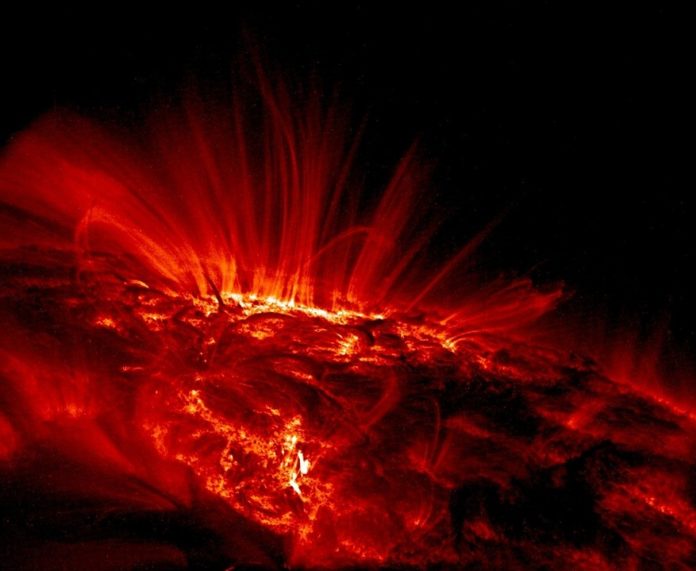According to a new collaborative study by the Queen’s University Belfast and Aberystwyth University, the sun’s magnetic field is ten times stronger than previously thought. These findings can potentially offer detailed insights into the processes that happen in the sun’s immediate atmosphere.
Working from the Swedish 1-m Solar Telescope at Roque de Los Muchachos Observatory, La Palma in the Canary Islands, Dr. David Kuridze, Research Fellow at Aberystwyth University studied a particularly strong solar flare which erupted near the surface of the sun on 10 September 2017. Along with his team, he applied a combination of favorable conditions and an element of luck that enable them to decide the strength of the flare’s magnetic field with remarkable precision.
Dr. Kuridze said, “Everything that happens in the sun‘s outer atmosphere is dominated by the magnetic field, but we have very few measurements of its strength and spatial characteristics.
“These are critical parameters, the most important for the physics of the solar corona. It is a little like trying to understand the Earth‘s climate without being able to measure its temperature at various geographical locations.
“This is the first time we have been able to measure accurately the magnetic field of the coronal loops, the building blocks of the sun’s magnetic corona, which such a level of accuracy. Up to this point, effective estimation of the magnetic field has been hindered by the weakness of the signal from the sun’s atmosphere that achieves Earth and carries data about the magnetic field, and limitations in the instrumentation accessible.
The magnetic fields detailed in this examination are like those of a typical fridge magnet and around multiple times weaker than the magnetic field experienced in an MRI scanner.
Over a 10-day period in September 2017, Dr. Kuridze studied a functioning zone on the sun’s surface which the team knew to be particularly volatile. For the observation, the telescope he used can only focus on 1% of the sun’s surface at any given time.
Luckily, he focused on the right area at the right time when the solar flare erupted.
Professor Michail Mathioudakis from the School of Mathematics and Physics, Queen’s University Belfast, who also worked on the project, added: “This is a unique set of observations that, for the first time, provide a detailed map of the magnetic field in coronal loops.
“This highly rewarding result was achieved due to the dedication and perseverance of our early career scientists who planned and executed the observations. The methodology used in this work and the result itself will open new avenues in the study of the solar corona.”
